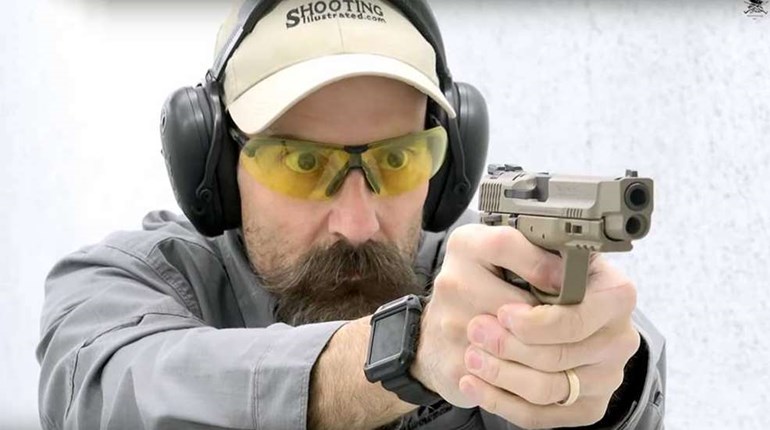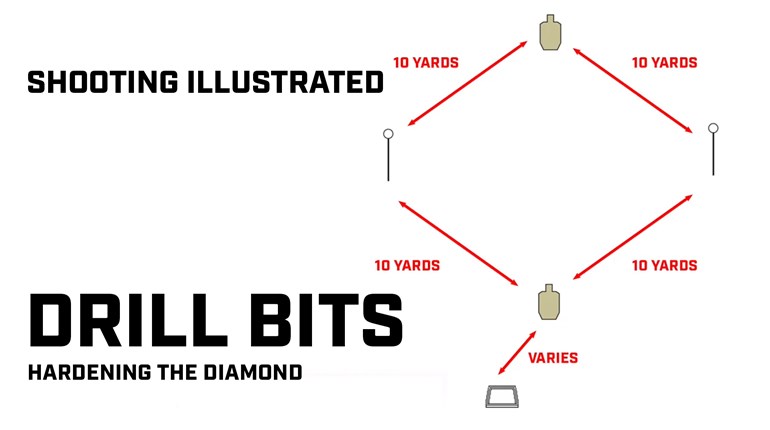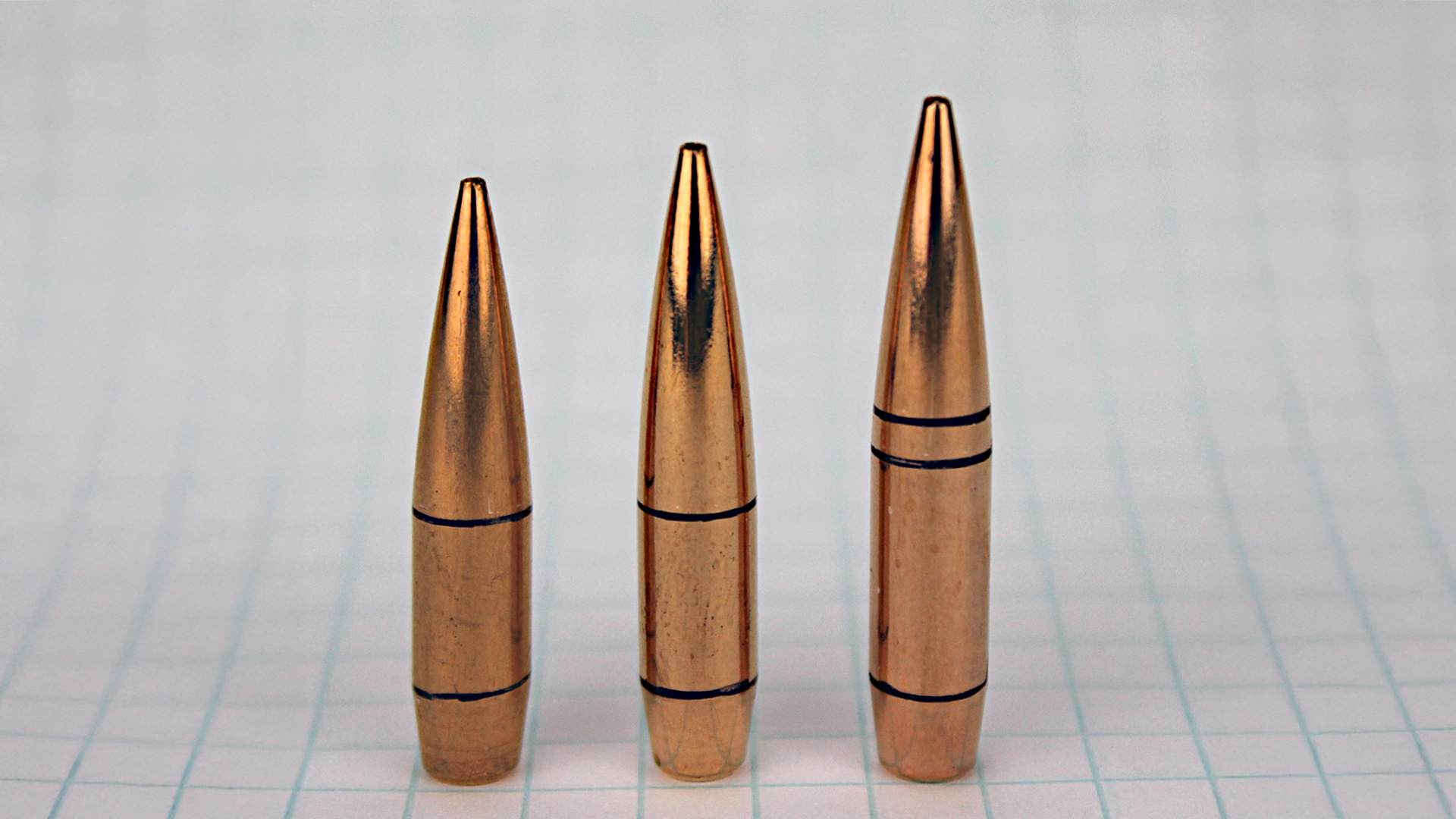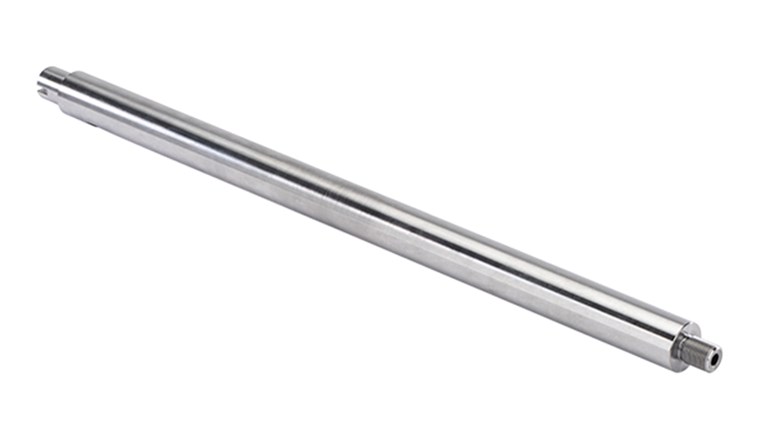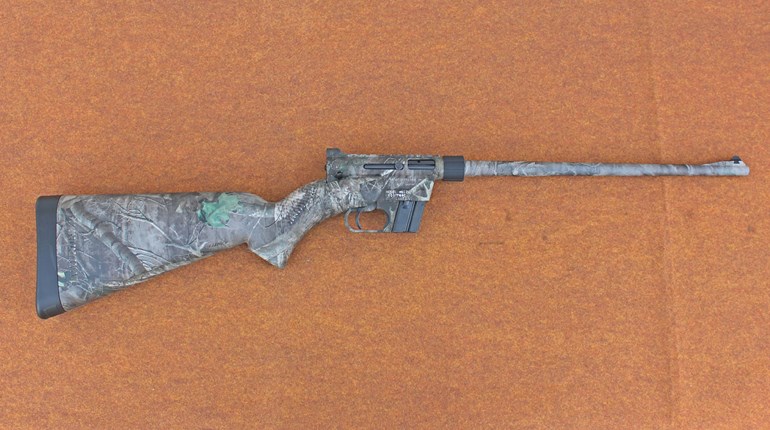In Part 1 of our “Precision Pistol Tips with Brian Zins” video series, we covered pistol grip improvement. The focus of Part 2 was Brian’s pistol trigger control tips. Now for Part 3 (you can watch the video above), Brian focuses on the important, yet often overlooked relationship between aiming and trigger control. Brian also revisits and expands on concepts from the first two videos, such as the importance of correct trigger finger placement.
Part 3: The Special Relationship Between Aiming and Trigger Control
Essentially, all good shooting boils down to being skillful with hand-eye coordination. Whether you are shooting with iron sights, scope, or a red dot-type sight―it’s nothing more than your finger reacting to what your eye sees. Brian emphasizes this idea.
“I don’t think a lot of people understand that it is nothing other than your finger reacting to what your eye sees. Once you can comprehend that, you will make some big [improvements].”

Here’s where Brian may blow your mind. He eschews conventional thinking (actually he throws it out the window). He often always asks his students the following question: “What is the trigger for?” Seems easy enough, right? Here’s what Brian says: The trigger is used to maintain sight alignment and sight picture.
Says Brian: “You can hold sight alignment and sight picture on your pistol all day long, [but] when does it change? When you move the trigger―the sights move―they have to move. No matter how big your hand is or how strong you are, once you apply force to your pistol it’s going to move a little bit.”
This leads us to the two types of trigger control. According to Brian, there are only two types of trigger control: uninterrupted and wrong. Note, that he does not mention “interrupted.” There’s only uninterrupted, or wrong. If you stop squeezing that trigger, the shot breaks, then you stop and then start again, the sights are going to move.
“There is a distinct relationship with the aiming process and trigger control. You’ve got to marry those two concepts together … The finger reacts to what the eye sees,” Brian remarked. “We go from ‘align the sights, then pull the trigger’ to ‘align the sights as you are pulling the trigger.’”

This is a key concept that Brian reinforces time and time again when instructing bullseye shooters. He elaborated:
“When I’ve got pressure on the trigger, and it’s actually starting to move to the rear before the sights are perfectly aligned in the center of the target. The sights are automatically aligned. Why? Because I have a perfect grip, stance and position. Every time my gun comes up and settles in, those sights are automatically aligned to my eye, and they are moving towards the center of the target. As those sights start dipping down into the black, that’s when I start putting pressure on the trigger, moving it to the rear, as the sights are moving down … It’s aligning the sights while you are pulling the trigger.”
These two key pistol shooting fundamentals―aiming and trigger control―must be used together hand-in-hand. Once you combine these two concepts (Brian thinks this should be a single word called aimingtriggercontrol), your pistol shooting skill will definitely see big improvements.
In Part 4, Brian covers aiming a red dot sight with a pistol for precision-style (bullseye) competition. The tips in all of these videos are taken straight from Brian’s instructional clinics. Learn more about Brian Zins pistol training at www.pointblankrange.com/training-instructor-bios/brian-zins



